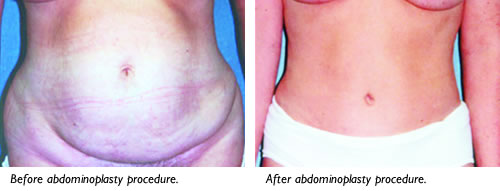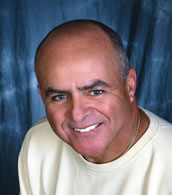Tummy Tuck—Abdominoplasty
Joseph W. Rucker, MD, FACS
Plastic Surgery
Rucker MD Plastic Surgery Clinic
Eau Claire
Are exercise and weight loss not giving you the abdomen you desire? The tummy tuck (abdominoplasty) procedure helps to flatten your abdomen by removing excess skin and fatty tissue. This procedure is suitable for men and women who are in good general health. Tummy tuck should not be confused with liposuction (the cosmetic surgery used to remove fat deposits), although your surgeon may also elect to perform liposuction to improve the overall results. Good candidates for tummy tuck are women who have muscles and skin stretched by multiple pregnancies, and persons who were obese at one point and still have excessive fat deposits or loose skin in the abdominal area.

If you are a woman who is still planning to have children, you may want to wait to investigate the tummy tuck procedure until you are through bearing children. If you are planning to lose weight, you do not want to consider a tummy tuck until you have reached and are maintaining your goal weight.
How is a tummy tuck done?
Depending on your desired result, this surgery can take from 1–2 hours. The complexity is dependent upon the amount of excess tissue you have in the lower abdominal wall. Most patients will receive a general anesthetic. There are several options for tummy tuck. Your surgeon will examine you and then discuss your desired results and anticipated outcome for each.
Complete Abdominoplasty
The incision is made in the lower abdominal wall area, from hipbone to hipbone. The excess tissues beneath the umbilicus (belly button) are subsequently removed and the scar is hidden beneath the panty line.
Belt Abdominoplasty
This procedure is for patients who have usually lost a considerable amount of weight, and the laxity of the skin and fatty tissues occurs not just on the front of the abdomen, but also around to the back. This requires a circumferential excision of these tissues to get the overall best result.
Partial or Mini Abdominoplasty
The partial or mini is often performed on patients whose fat
deposits are located in a very small area beneath the belly button. This procedure can be done in the office with local IV sedation.
Good candidates for tummy tuck are women who have muscles and skin stretched by multiple pregnancies, and persons who were obese at one point and still have excessive fat deposits or loose skin in the abdominal area.
How to Prepare for a Tummy Tuck
If you are a smoker, you will have to stop completely for a certain time period, as determined by your doctor, because smoking can cause improper and poor wound healing. It is also important to eat a well-balanced diet, as nutrition plays a key role in the healing process. Your physician will discuss with you the medications that you are currently taking and whether these can be taken during the time leading up to your surgery.
What are the potential complications
and side effects of tummy tuck surgery?
In the approximately 1,000 procedures that I have performed, most patients rate the initial pain level at 3 to 5 on a scale of 1 to 10. After surgery, all patients should expect some type of minor discomfort for at least one week; swelling may occur for 2–5 months. You may experience some numbness and bruising over the treated areas. The numbness will resolve between 2–6 months after your operation. With any surgery there are risks, the most common are infection, excessive scarring and skin loss.
Does insurance cover this procedure?
Insurance carriers generally do not cover elective cosmetic surgery, but your carrier may consider coverage of a certain percentage, if you have a hernia that can be corrected during this procedure. You should discuss this with your surgeon during your initial consultation.
Recovery
The majority of my patients love their look after this procedure; however, you must realize that you might not feel like yourself for several weeks after this operation. Most patients can probably return to office work within two weeks and heavy lifting within 3–5 weeks. Your body has been under tremendous stress, both emotionally and physically. It is very important that you follow proper diet and exercise to maintain your new look.
Dr. Rucker – Rucker MD Plastic Surgery Clinic
For information or to schedule an appointment:
715.833.2116 | 800.456.8222 | ruckermd.com
Dr. Rucker sees patients in Eau Claire, River Falls and New Richmond.





 © 2009 OakLeaf Medical Network and OakLeaf Surgical Hospital. All rights reserved.
© 2009 OakLeaf Medical Network and OakLeaf Surgical Hospital. All rights reserved.